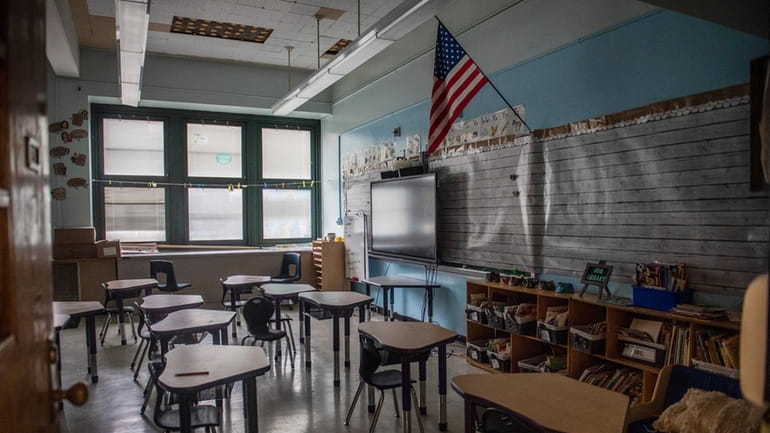Absenteeism hurts all students, hinders academic success

Absenteeism, which has increased in the wake of the COVID-19 pandemic, adds to students’ learning losses. Credit: AP/Brittainy Newman
Education is paramount on Long Island, as we celebrate award-winning students, debate curriculum choices, vote on budgets and voice concerns about security needs.
But it's clear we're not putting enough attention on one piece of the education equation: Making sure students show up to school in the first place.
Nearly 1 in 5 Long Island students missed 18 or more days of school during the last academic year — a chronic level of absenteeism that's extraordinarily detrimental to students' academic success. It hurts not only those students who are chronically absent, but others whose teachers must now accommodate those trying to catch up.
Drilling down into the data sheds light on larger concerns, especially in school districts with the highest levels of chronic absenteeism, where thousands of students missed at least 10% of the school year.
In Hempstead, more than half the students — 52% — were chronically absent during the 2022-23 school year. In William Floyd, that figure was 47%. Rates hovered around or above 40% in Roosevelt, Amagansett, Central Islip and Uniondale, too.
These districts historically have faced challenges, with student populations that have significant needs. Absenteeism, which has broadly increased in the wake of the COVID-19 pandemic, now just adds to those difficulties.
In many cases, absenteeism isn't about a family vacation or an occasional mental health day. In some, it's a student who needs to work, or one who has to care for other family members, often a sibling. In others, it's a matter of having parents or guardians with significant financial or health issues or who do not or cannot prioritize school.
Too many students already lost time, knowledge and social and emotional growth due to COVID. Absenteeism now heightens such learning loss.
It is a painful, complicated set of circumstances, without an easy solution. Recognizing the issue comes first. This may be an opportunity to renew and expand conversations about community schools, and whether there are ways for our schools to better address needs beyond academics, such as food, transportation, health care and housing. And it's certainly a time to improve how schools communicate with families. Teachers know their students best, and communicating with parents as soon as absences hit — and before they become a problem — is critical. Making attendance a priority, providing incentives to encourage students to come to school, and increasing awareness would help.
Uniondale, which saw its chronic absenteeism rate drop from 50% to 39%, might serve as a model. While its rate is still too high, the improvement is indicative of a working approach, with a team of teachers, social workers, monitors and others focused on the issue.
Long Island loves celebrating school success stories. But the only way all students will succeed is if they come to school, every morning, ready to learn.
MEMBERS OF THE EDITORIAL BOARD are experienced journalists who offer reasoned opinions, based on facts, to encourage informed debate about the issues facing our community.
